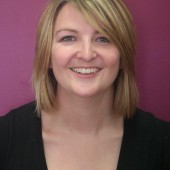I had the pleasure of attending the Walkley Foundation’s Freelance Focus conference this week with support from the ASC and the UQ School of Journalism and Communication. It was a busy day, full of inspiring content that ranged from Noah Rosenberg (founder and CEO of Narratively) talking on fostering audiences and narrative, to Nathan Burman (comms guy for Twitter Australia) running a masterclass focused on best practice for the social medium.
Running through the entire conference was the theme of storytelling. It was a theme that seems particularly relevant to ASC given spreading science stories is a large part of what we do. So, here are five take home points that might just help you the next time you’re crafting a science story. Read along for the who, what, when, where, and why.
Who is your audience?
Before you put pen to paper (or fingers to keyboard), imagine your audience. Who is best suited to your tale of the impact of gravity on quantum weirdness?
Your audience shouldn’t just help you to manage the complexity of your language, it should also shape the mediums you choose to convey your story through.
@NoahSRosenberg @walkleys @auscicomm Proverb 1: What came first, the perfect piece or the right audience? #FreelanceFocus
— Daniel Oldfield (@TheMicroscopist) August 4, 2015
What medium will you use to tell your story?
It might seem easiest to write a press release and hit send, but is that the most effective way of getting your story out there? Would a podcast be more accessible to your audience, would it make your story come alive? Choose a medium that embraces the key elements of your story – whether that be a soundbite, long-form article or ten-second GIF.
On capturing the unique history of rural towns through sound #freelancefocus @hamishsewell
— Tara (@_tiamaree) August 5, 2015
Soundtrails is an interesting blend of stories and space beyond GPS @walkleys #freelancefocus
— Skye Doherty (@skyedoherty) August 5, 2015
When should your story end?
Your story doesn’t need to be a one hour documentary to have impact. Think carefully about the ideal length of your work and be realistic about resourcing. It’s a cliché that rings true – sometimes less is more.
#freelancefocus @kylie_lang says it's amazing what you can say about someone's life in 450 words.
— Sarah Binney (@SarahBinney) August 5, 2015
Where is the person in your story?
Personal tales make dry, complex information come alive. Whose experiences can you tap into to give warmth to your piece? Use their story to bring the unique and remarkable aspects of your story to light.
"Who is the person in this story?" – @Kylie_Lang on the power of the narrative #freelancefocus #scicomm
— Tara (@_tiamaree) August 5, 2015
Why should people read your story?
Cultivating a community around your story will help increase its impact once published. Identify the people around you who will be interested and happy to share your tale with others.
Who is the community for your story? Who'd respond and post on social media? #FreelanceFocus https://t.co/MMVN58ZKOy
— KylieSturgess (@kyliesturgess) August 4, 2015

